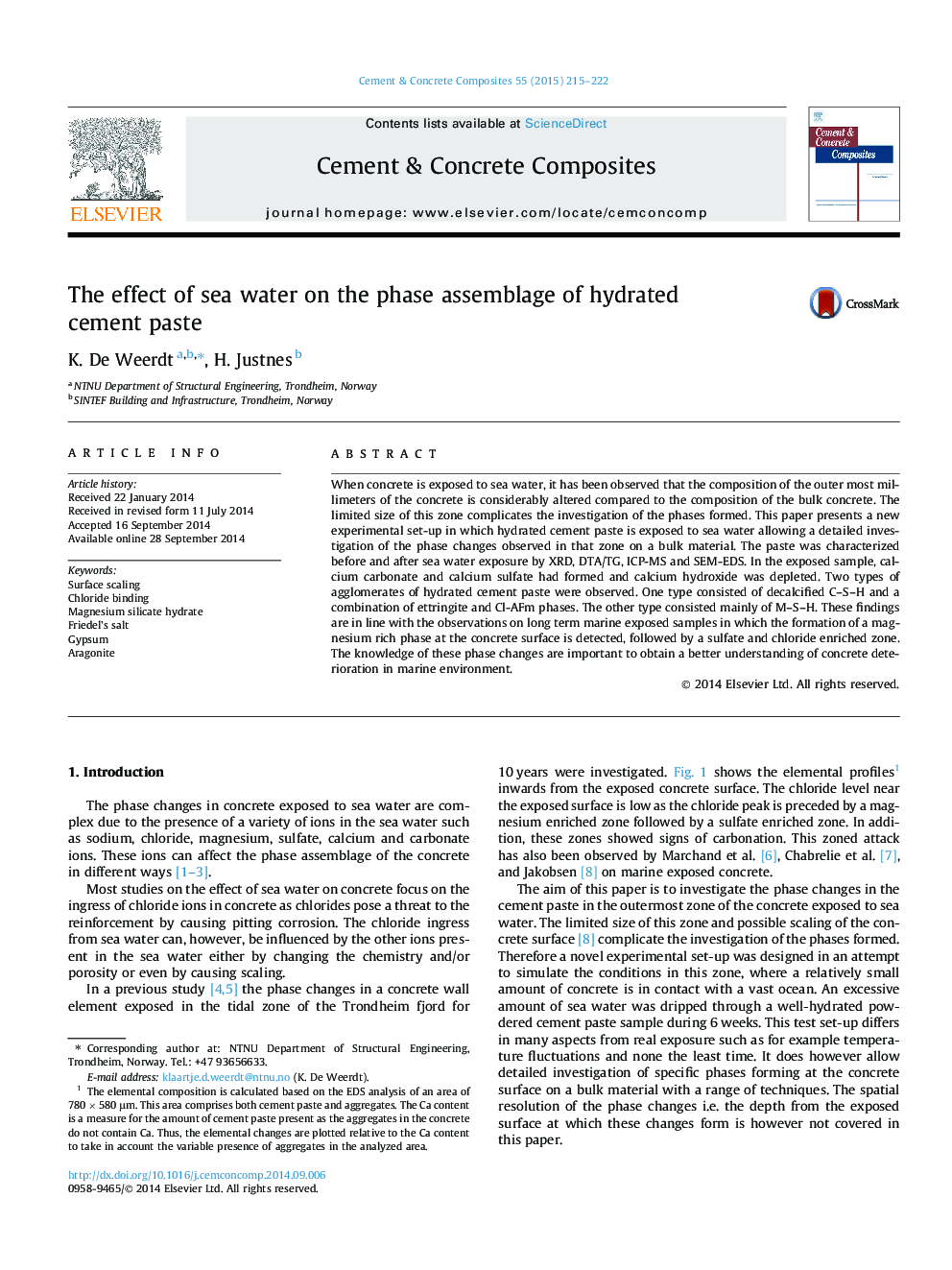| Article ID | Journal | Published Year | Pages | File Type |
|---|---|---|---|---|
| 7884270 | Cement and Concrete Composites | 2015 | 8 Pages |
Abstract
When concrete is exposed to sea water, it has been observed that the composition of the outer most millimeters of the concrete is considerably altered compared to the composition of the bulk concrete. The limited size of this zone complicates the investigation of the phases formed. This paper presents a new experimental set-up in which hydrated cement paste is exposed to sea water allowing a detailed investigation of the phase changes observed in that zone on a bulk material. The paste was characterized before and after sea water exposure by XRD, DTA/TG, ICP-MS and SEM-EDS. In the exposed sample, calcium carbonate and calcium sulfate had formed and calcium hydroxide was depleted. Two types of agglomerates of hydrated cement paste were observed. One type consisted of decalcified C-S-H and a combination of ettringite and Cl-AFm phases. The other type consisted mainly of M-S-H. These findings are in line with the observations on long term marine exposed samples in which the formation of a magnesium rich phase at the concrete surface is detected, followed by a sulfate and chloride enriched zone. The knowledge of these phase changes are important to obtain a better understanding of concrete deterioration in marine environment.
Related Topics
Physical Sciences and Engineering
Engineering
Industrial and Manufacturing Engineering
Authors
K. De Weerdt, H. Justnes,
